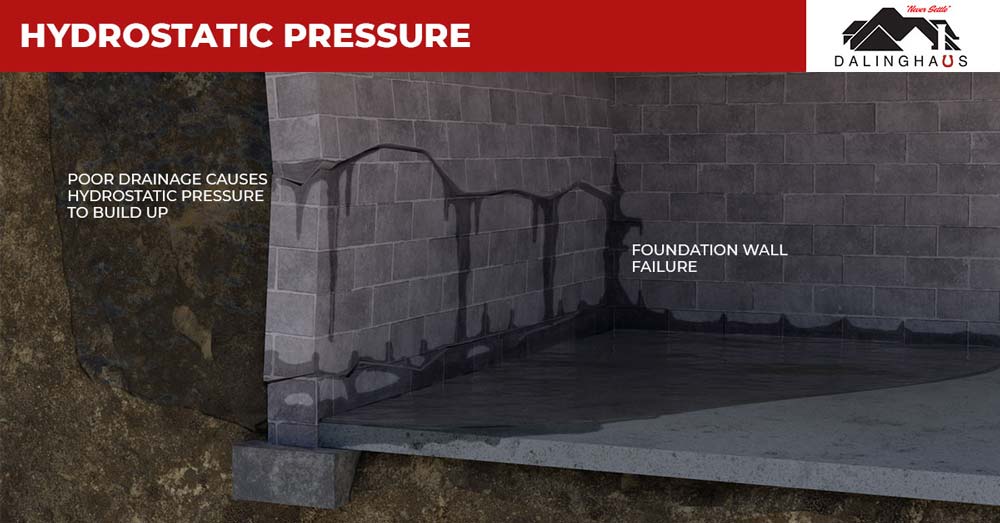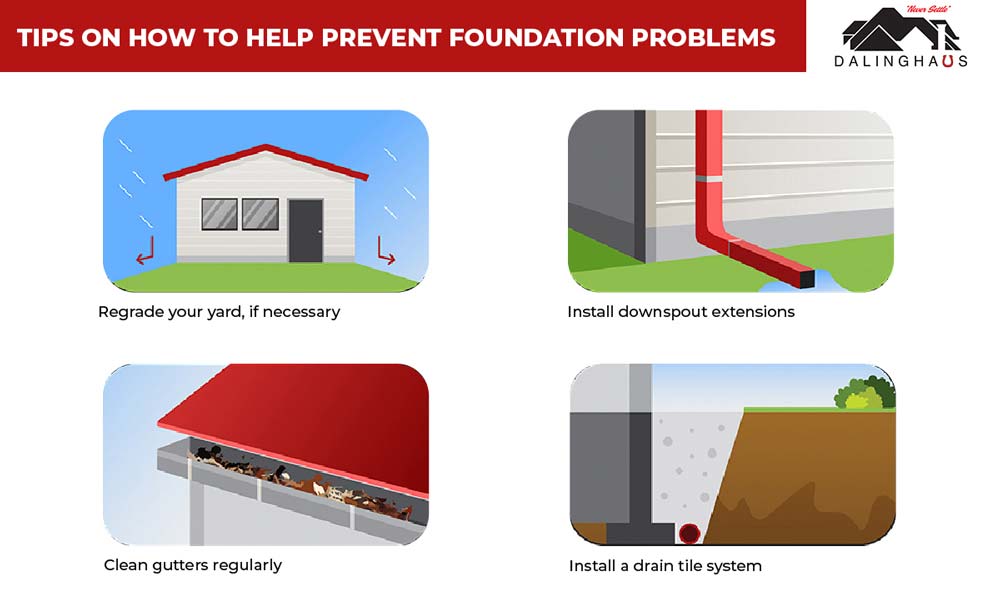Are you a homeowner who has noticed vertical cracks appearing in a poured concrete foundation wall? If so, then you’re probably concerned about what could be causing them. While finding any cracks in your home’s foundation can be worrying, you should know that usually, vertical hairline cracks in a poured foundation wall do not necessarily indicate major problems. Read on to learn more about what causes vertical hairline cracks in poured concrete foundation walls, your repair options, and more.
What Causes Vertical Hairline Cracks in Poured Concrete Foundation Walls?
Vertical hairline cracks are common in poured concrete foundation walls. The good news is that they aren’t usually indicative of a structural issue, but are merely a cosmetic concern. These cracks appear due to the natural process of shrinkage that occurs as the freshly poured concrete cures. As the concrete dries and cures, it undergoes a slight reduction in volume. This shrinkage can cause hairline cracks to form–particularly in longer, uninterrupted stretches of concrete.
Although these shrinkage cracks aren’t an immediate threat to the structural integrity of the building, they can allow water to enter the crawl space. Water intrusion can cause various issues, ranging from mold growth to structural damage. Therefore, it’s essential to address these cracks by sealing them to prevent water penetration.
Repair Solutions for Vertical Hairline Cracks in a Foundation Wall
The most common solution to repair hairline vertical foundation cracks caused by shrinkage is injecting epoxy or polyurethane foam into the crack to fill the void and prevent water penetration from happening. Both of these materials are strong and durable, and can seal the crack while maintaining the structural integrity of the foundation wall. Epoxy injection is usually preferred for more minor cracks, while polyurethane foam injection is better for larger cracks or cracks that are actively leaking. It’s important to properly diagnose the cause and extent of the crack in order to determine the best repair solution and prevent further damage to the foundation.
Not All Cracks in a Foundation Wall Are Caused by Shrinkage. Some Are More Serious.
Shrinkage cracks aren’t the only cracks that occur in foundation walls. In some scenarios, the crack in the foundation wall may be caused by hydrostatic pressure that builds up in the ground around your home’s foundation due to poor drainage. Over time, this pressure can become so intense that it causes foundation walls (i.e., crawl space walls) to bow inward, and even crack. These types of cracks are larger and typically horizontal.

Unlike shrinkage-related cracks, hydrostatic pressure-caused cracks are significantly more serious. This is because they indicate a more significant issue at play: excess moisture buildup around the foundation. When moisture accumulates around the foundation, it can cause many problems, including the deterioration of foundation walls and the growth of harmful mold and mildew. Left unchecked, these issues can lead to more significant structural problems with the home.
Identifying the root cause of any foundation wall cracks is vital to mitigating any ongoing damage and preventing it from reoccurring. In situations where hydrostatic pressure is to blame, homeowners may need to take measures like foundation waterproofing, improving their drainage systems, or grading their yard to prevent future damage.
Tips on How to Help Prevent Foundation Problems
Believe it or not, the most significant contributing factor to foundation issues is none other than water. Excess moisture in the ground around a foundation can lead to an array of problems, such as foundation cracks and differential settlement, or a foundation sinking into the ground unevenly.
This means the solution to preventing most foundation problems in the first place is simple–groundwater control. There are several ways to achieve this, including the following:

- Regrade your yard, if necessary – This means ensuring that the ground around your home slopes away from the foundation. This is necessary because groundwater can cause soil erosion, settlement, and other problems if it is allowed to accumulate around the foundation.
- Install downspout extensions – Extending downspouts away from the foundation of a home can make sure rainwater is properly channeled away from the foundation before release.
- Clean gutters regularly – Gutters that are clogged with leaves and other debris can cause water to spill over, run down the side of the house, and soak the ground around the foundation.
- Install a drain tile system – A drain tile system works by collecting groundwater and channeling it away from the house’s foundation using buried drainage pipes. When it comes to foundation waterproofing solutions, you can’t beat a drain tile system. For more information about drain tile systems, see our article Be Careful When Landscaping Around Your House.
Other things you can do to help prevent foundation issues include keeping trees with extensive root systems away from the foundation. Some trees have root systems as large as their canopies–and if they invade the ground under your home, they can cause a lot of trouble because they create movement in the ground under the foundation. This can lead to differential settlement and a costly foundation repair.
Taking the measures listed above can safeguard your home’s structural integrity, preserve its property value, and help you avoid costly foundation repairs.
If you’re concerned about a vertical hairline crack in your foundation wall, contact us today to schedule a free inspection and receive a repair estimate. We serve Southern California, Arizona, and Nevada.






